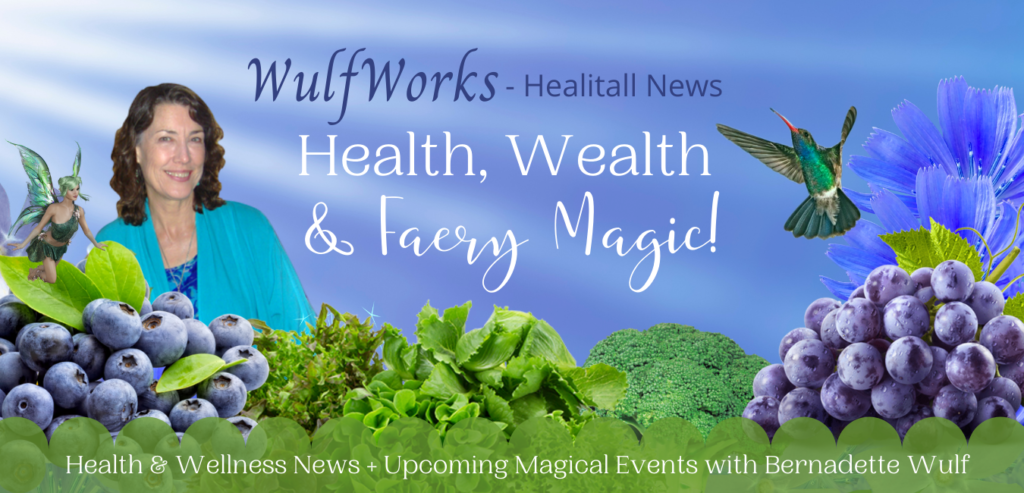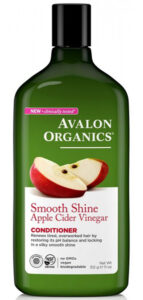
Nightshades, Chocolate, Heart Disease, Toxic Hair Products
In This Issue:
- Are Nightshades Really So Bad?
- Chocolate: Harmful or Healthful?
- Healing Heart Disease with Diet
- Toxic Hair Care — and Other Cleaning Products
Find lots of healthy recipes in my Whole Food Plant-Based, Gluten Free Diet & Recipes Facebook Group
 Message from Bernadette Wulf
Message from Bernadette Wulf
Greetings,
Happy March!
This newsletter turned out to be a long one, but that’s because I found so much good information to share. Some months are like that.
It’s also been really rainy lately, so I’ve had lots of indoor time to work on the newsletter.
This month we have some great info. about Nightshades, Chocolate, preventing Heart Disease and how to avoid Toxic Hair Care products.
Coming Up Soon!
Sometime in March I’ll be offering a Zoom workshop on meeting your Animal Spirit Allies. We will be taking guided shamanic journeys to meet one or more of your animal spirit guides. Keep an eye on your inbox if you are interested.
I always like to start by making a banner to tune into the energy of the workshop.. Then I have a whole list of little tasks I need to complete to get the workshop launched. I haven’t even started on that yet. Stay tuned!
Other than that, I’ve been updating pages of my Faehallows School of Magic website. Check out the progress here: https://www.celticmysteryschool.com/magic-school
I think this page on sun gods through history is particularly interesting: https://www.celticmysteryschool.com/real-magic/sun-god-myths
Have questions or comments? —>>> Email Bernadette <<<— Please use this link and do not hit reply to this post or I may not get your message for a long time.
To your health and happiness!
Bernadette Wulf
WulfWorks.com – HealItAll.com – Eat Plants for Life
 Are Nightshades Really So Bad?
Are Nightshades Really So Bad?
Nightshades, or plants in the tomato/potato family, have had a lot of bad press lately. They have been blamed for arthritis, fragile bones and migraine headaches, but do they really deserve all that mistrust?
Apparently, aside from a few people who have allergies or sensitivities to the nightshade family, they are actually among the healthiest foods we can eat.
Nightshades include tomatoes, potatoes, all types of peppers, eggplants, goji berries, tomatillos, paprika and pepino melons. The first four on the list make up a large part of my diet… and my vegetable garden in the summer!
Here’s what besthealthmag.ca has to say about nightshades:
Some people may think nightshade vegetables are harmful because they’re confusing them with “deadly nightshade” or Atrope belladonna, an inedible weed that’s also part of the Solanaceae family, explains Micallef. Historically, the deadly nightshade has been associated with witchcraft. When ingested in large amounts, it may cause convulsions or even death. But that has nothing to do with these vegetables. Here, we bust four other myths:
1. Myth: Nightshades contribute to osteoporosis
2. Myth: Nightshade vegetables contain a toxic alkaloid
3. Myth: Nightshade vegetables worsen arthritis pain
4. Myth: They cause migraines
The article goes into detail about why each of these points is false. For example: Stephanie Atkinson, a member of the scientific advisory committee for Osteoporosis Canada, says [ ] “The alkali contributed by vegetables and fruits is beneficial for bones as it protects them from using bone to neutralize blood acid.”
In other words, if you are concerned about your bones, it’s not the veggies that are going to cause problems. It’s the acid-forming foods like meats, eggs, excessive amounts of grains (except millet), beans, and processed foods that will weaken your bones when not balanced with large amounts of alkaline-forming foods (mainly fruits and vegetables).
As for causing arthritis, there don’t seem to be any scientific studies supporting that claim. In fact, once again, it is the acid forming foods I listed above that have been implicated in most cases of arthritis. After all, we are primates, so our natural diet is similar to that of our great ape cousins — though fortunately we get to enjoy a lot more variety (which may not actually be ideal for health, but it sure makes life more fun).
Read more about the benefits of nightshade veggies — https://www.besthealthmag.ca/article/nightshade-vegetables/
Chocolate: Harmful or Healthful?
It depends on who you ask and where your chocolate comes from.
According to Dr. Gregor’s research in How Not to Age, a daily dose of cacao powder can actually help seniors build muscle. On the other hand, Medical Medium claims that the caffeine in chocolate is really hard on your adrenal glands.
The issue that concerns me the most is the toxic heavy metals found in many brands of chocolate, cocoa and cacao.
I’ll cut to the chase and give you the lists of the safest chocolate bar options, from foodrevolution.org:
Chocolate bars with relatively safe amounts of heavy metals included:
-
- Mast Organic Dark Chocolate 80% Cacao
- Taza Organic Deliciously Dark Chocolate 70% Cacao
- Ghirardelli Intense Dark Chocolate 86% Cacao
- Ghirardelli Intense Dark Chocolate Twilight Delight 72% Cacao
- Valrhona Abinao Dark Chocolate 85% Cacao
The safest chocolate options, according to As You Sow, were:
-
- Endangered Species Natural Dark Chocolate 72% Cocoa — (neither lead nor cadmium was detected)
- Ojio Organic Cacao Nibs Ethically Sourced: Peru — (no lead detected, 0.2 mcg of cadmium)
- 365 Everyday Value Organic Dark Chocolate Coconut 56% Cacao — (0.5 mcg lead, no cadmium detected)
- Chocolove Chilies & Cherries in Dark Chocolate 55% Cocoa — (0.2 mcg lead, 0.1 mcg cadmium)
- Snickers Bar (no lead detected, 0.6 mcg cadmium)
Most chocolate companies will send you the studies showing heavy metal levels in their brand. Don’t be afraid to contact them and ask!
Read more about heavy metals in chocolate — https://foodrevolution.org/blog/heavy-metals-in-chocolate/
Here’s a page that lists best and worst chocolate and cacao brands — https://www.inonaround.org/cacao/
 Healing Heart Disease
Healing Heart Disease
Since heart disease is the number one killer in the Western world, and statistically, rates increase with age, it makes sense to do all we can to prevent it — especially as we get older.
Of course, preventing heart disease in the first place is the ideal, but most of us were raised on fatty animal products and processed foods that clog our arteries with plaque. The good news is that heart disease can be stopped in its tracks, and often even reversed.
Here’s what Dr. McDougall had to say about healing heart disease:
Atherosclerosis is not sledge-hammer resistant rock. This is tissue that can heal under the proper conditions. You can create this healing environment cost-free with a change in diet (low-fat, whole plant foods) and habits (quit smoking). A small, but important, addition for the improvement in the conditions for healing can be accomplished with the use of cholesterol-lowering medications.
Multiple studies show that it is possible to stop or reverse heart disease in most cases with a healthy diet and a little exercise. Several plant-based doctors have been doing it routinely for decades. Unfortunately, many doctors don’t believe their patients will adopt a healing diet, so they won’t even bother to recommend it.
I keep hearing about doctors recommending ketogenic diets for everything from cancer and heart disease to Alzheimer’s disease. It is absolutely shocking that they don’t seem to pay any attention to the vast body of research showing that this is the exact opposite of what these people need in order to heal.
I know doctors are busy, but heck! People’s lives are at stake. They should at least be taught the basics of good nutrition in medical school, but that rarely happens. Many medical schools have very little to NO nutritional education.
Okay… I got off on a little rant there. It’s just one of those things that really bugs me whenever I hear of another friend or family member being steered toward a dangerous high-fat, high-protein keto or paleo diet.
Think gorillas and chimps folks! We are also primates and not so different when it comes to our dietary needs.
Read what Dr. McDougall has to say about healing heart disease — https://www.drmcdougall.com/education/information-all/cleaning-out-your-arteries/

Toxic Hair Care… and Other Cleaning Products Too
It’s funny that in their 10 point list all the points start with #1, but it’s a good list never-the-less, so I am posting it here.
I corrected the numbering on this list of dangerous ingredients, but you will have to go to their page to get the list of safe and healthy ingredients to look for.
Helpful hint: A friend of mine checked ingredients on every shampoo and conditioner in her local natural food store and the only brand with safe ingredients was Avalon Organics (at least in that particular store). They have a whole line of different formulas, all with healthy ingredients.
Dangerous ingredients in hair care products (and other household products), from attitudeliving.com:
-
- Formaldehyde.
On label: DMDM hydantoin, Diazolidinylurea, Imidazolidinylurea, Quaternium-15: all release formaldehyde which is now a worldwide known carcinogenic contaminant; - Ethoxylated surfactants.
On label: Sodium Laureth Sulfate and all the ingredients that end in -eth (eg. Ceteareth, Laureth-4, Laureth-23): they are all contaminated with carcinogenic agents; these ingredients are caused by a reaction with ethylene oxide, a synthetic chemical known to be carcinogenic and contaminated by a manufacturing impurity listed carcinogenic to humans like 1,4-Dioxane. This chemical is listed to be part of the group 2B by the International Agency for Research on Cancer (IARC) because of its cancer-causing properties in humans; - Ethoxylated emulsifiers.
On label: PEG, PPG- …, Polysorbate- (20, 30, 80…): they are all contaminated by carcinogenic substances generated from the reaction caused by ethylene oxide, like the one mentioned above; - Ingredients containing amines.
On label: Cocamidopropyl betaine, Triethanolamine and Cocamide DEA/MEA (and all the ingredients that end in ‘DEA’ or ‘MEA’): these ingredients are contaminated by nitrosamines, a chemical known to have cancer-causing risks to humans named in the Proposition 65 list; - Artificial dyes.
On label: FD&C, D&C, name of a colour followed by a number or “dye”. Artificial dyes may come from petroleum or may contain heavy metals. Some artificial dyes may cause irritation or sensitivity according to EWG, or may be contaminated with recognized carcinogens according to CSPI (Center for Science in the Public Interest). - Endocrine disruptors.
On label: Propylparapen, Isopropylparapen, Butylparaben, Isobutylparaben, BHA, BHT, Phthalate, Triclosan: These substances can interfere with the correct functioning of the hormonal system; - Isothiazolinones.
On label: Methylisothiazolinone (MIT) and Methylchloroisothiazolinone (CMIT): chemicals known to cause skin allergies and eczema. There have been multiple cases of individuals that developed heightened sensitivity and increase incidents of chemical burns due to these ingredients; - Allergens.
On label: Phenoxyethanol, Cinnamal, Citral, Coumarin, Eugenol, Farnesol, Geraniol : Are all allergenic substances listed by the European Scientific Committee for Consumer Safety (CSSC) and the EWG. They pose risks of toxicity (aquatic fauna), irritation and skin allergies. The phenoxyethanol is classified in particular as “moderate danger” for health, in particular for its toxicity to the immune system and for allergies, according to EWG. It is an ingredient of concern; - Silicones and polymers.
On label: Dimethicone, Amodimethicone, Acrylates crosspolymer: are synthetics compounds, non-renewable and non-biodegradable sources; - Fragrance and perfume.
On label: Fragrance/Parfum.
- Formaldehyde.
Read more about the dangerous and the safe ingredients used in hair care products — https://attitudeliving.com/blogs/lifestyle/10-ingredient-to-avoid-in-a-shampoo-and-tricks-to-find-the-best-natural-products

New Earth Ambassador — Sharing Health, Wealth & Faery Magic to Uplift Your Life and the World!
What I love best is holding space for people to tap into the New Earth reality — a reality of harmony, cooperation and prosperity for all. I call it the New Camelot! I spend most of my time creating courses, workshops, blogs and art to support citizens of the New Camelot in their ongoing quest for health, abundant wealth and the magic of the Otherworlds.
I am passionate about protecting Nature, a healthy whole-plant-foods diet, artistic creativity, graphic design, connecting seekers with the faery realm, Celtic and Arthurian lore, my family, writing and gardening.
All my services are all listed at WulfWorks.com (my portal site)

